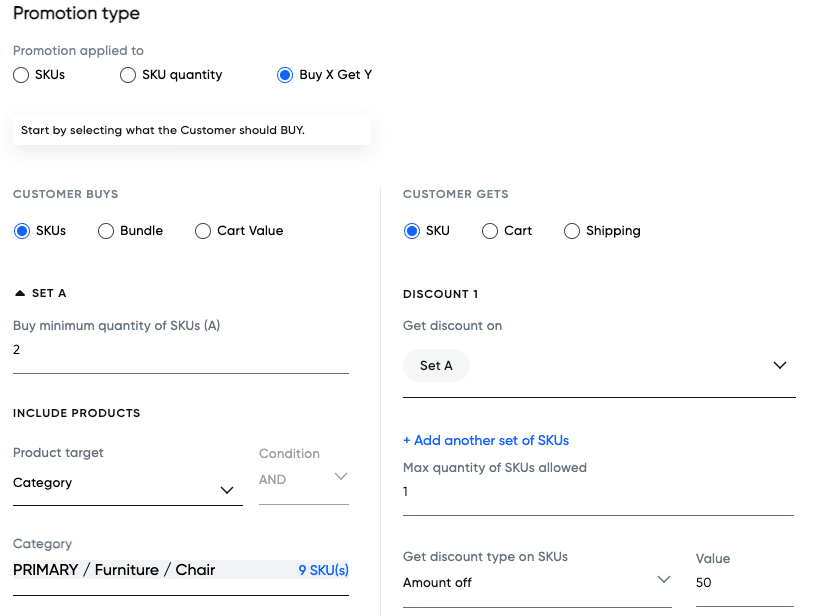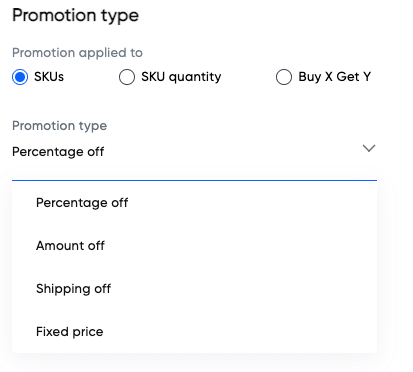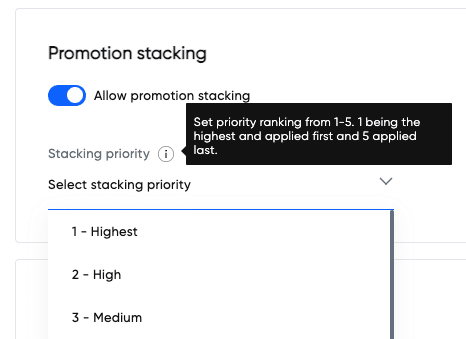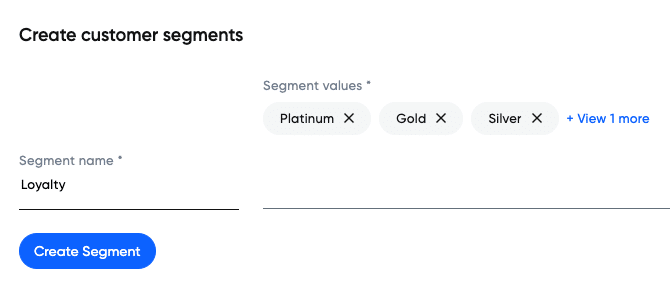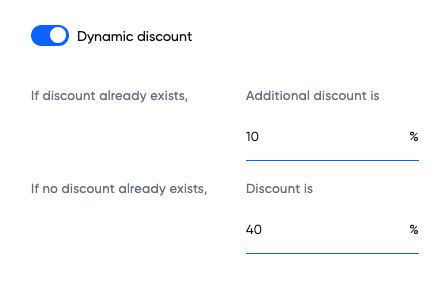The Enterprise Guide to Promotions Engines for Retailers
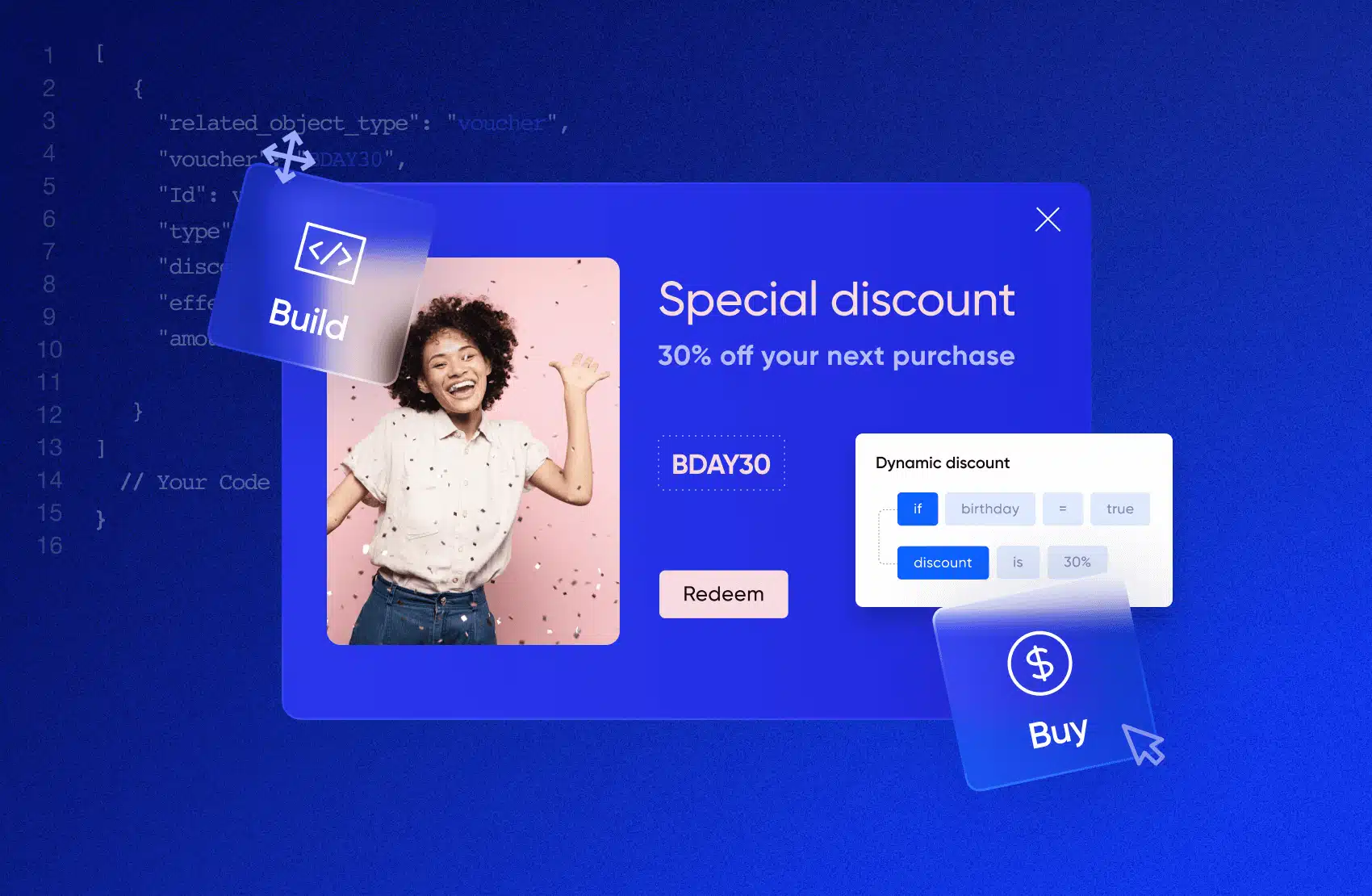
Modern promotions engines integrate seamlessly with e-commerce tech stacks and help businesses deliver personalized and targeted promotions directly to shoppers.
An enterprise-level promotions engine should boast a mix of basic and advanced features that can apply to complex use cases.
While building software is attractive for custom solutions, it is often better to buy a promotions engine to get to market faster, lower costs, ease burdens on IT, and increase conversion and retention rates.
fabric Offers is a powerful, feature-rich pricing and promotions engine that allows you to attract and retain customers while maximizing revenue and profitability.
Promotions engines are essential for creating, tracking, and delivering promotions to customers. According to the 2020 Shopper Story study by Criteo, 93% of US shoppers cite discounts and promotions as driving factors when deciding which retailers or brands to patronize.
A robust promotions engine can significantly reduce operational workload, increase conversion and retention, and make your promotional content more customer-centric, which will in turn generate more revenue.
In this guide for enterprise retailers, we’ll explore some of the basic and advanced features that businesses should look for. We’ll also cover some common use cases and answer an important question: Is it better to buy a promotions engine, or build your own? Let’s dive in!
[toc-embed headline=”What is a Promotions Engine?”]
What is a Promotions Engine?
A promotions engine is a powerful commerce software solution that helps businesses create and deliver personalized and targeted promotions directly to shoppers. Promotions engines can integrate seamlessly with other solutions to enable better digital experiences for customers.
Customers today want to feel understood by their brands through personalized pricing offers, messaging, content, promotions, and ads. For this to happen, businesses need technology solutions that can derive insights from product data and consumer behavior so that retailers can provide the right offer at the right time.
[toc-embed headline=”How Promotions Engines Work”]
How Promotions Engines Work
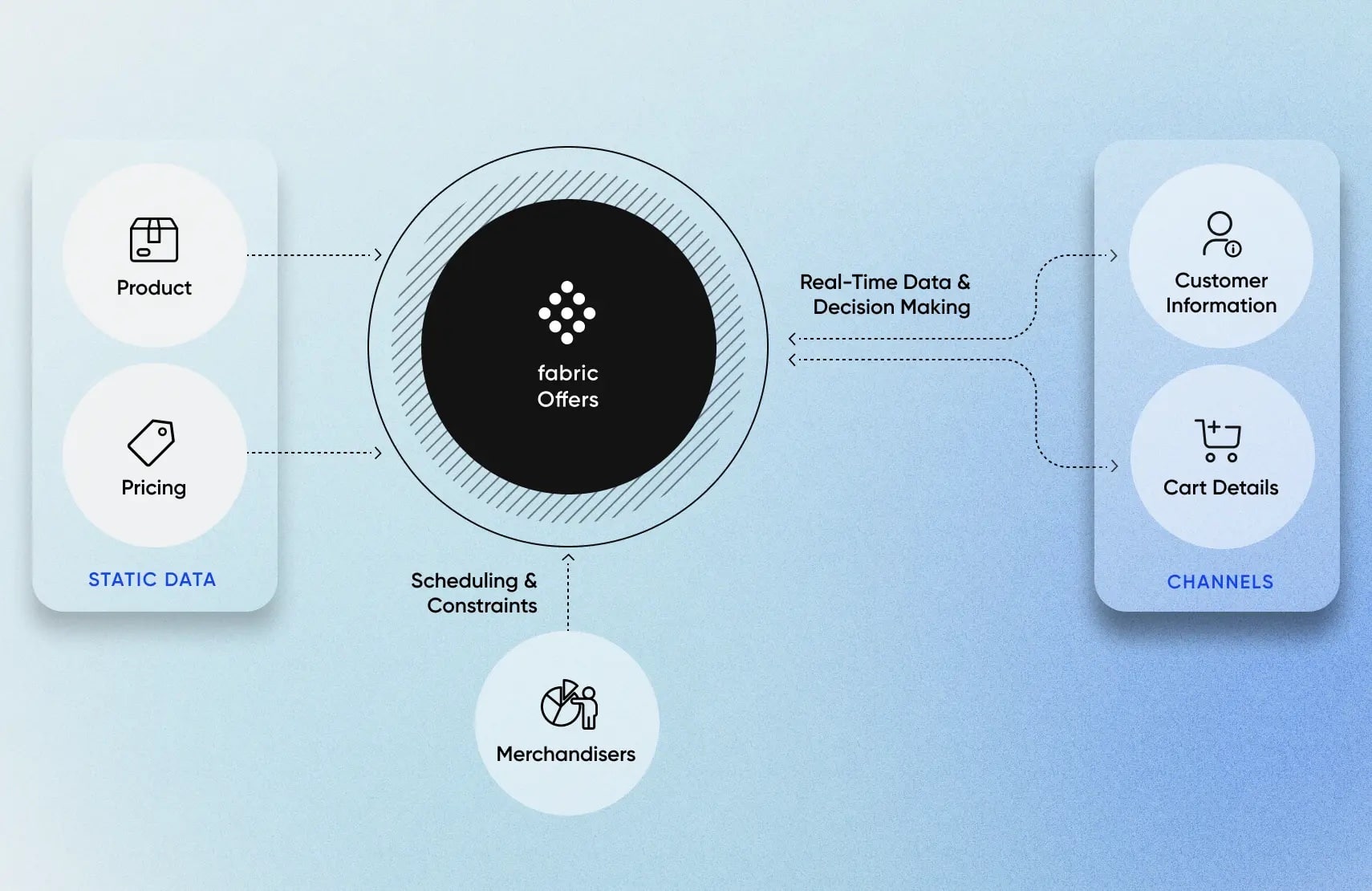
With a promotions engine, businesses can set rules and criteria that trigger discounts or promotions. These can include a specific product category, time period, or customer segment.
If the criteria is met, the promotions engine will then automatically work to calculate the discount or offer and apply it to the customer’s purchase. Promotions can be integrated with other parts of an e-commerce tech stack, such as a pricing engine, order management system, and cart and checkout.
Promotions engines can help businesses improve customer loyalty by providing personalized and relevant offers, improving the customer experience, and boosting revenue. Knowing how promotions engines work can help you understand the process involved and what you need to have in place.
[toc-embed headline=”Basic Features of a Promotions Engine”]
Basic Features of a Promotions Engine
A promotions engine should come with basic features that fit your business use cases. Here are some of the basic features that are common in modern and robust promotions engines (such as fabric Offers) that help businesses boost their marketing campaigns:
Auto-applied promotions
These promotions are applied automatically to the price displayed on the product page (SKU discount) or to the customer’s order (cart-level discount) after meeting certain conditions, without requiring any coupon codes. Conditions may include adding certain product items or brands or reaching a specific order amount.
Single and multi-use coupons
This type of promotion involves the use of a unique code for customers to receive either a set discount or a percentage off a purchase cost. The coupons can be made available as discount coupons, referral links, or codes, and can be single-use or multi-use.
Buy-Get promotions
This practice allows brands to sell product bundles at a discounted rate compared to what they would cost individually or giving a discount for spending over a minimum amount. The most common use is for “buy one, get one” promotions. Powerful promotions engines grant promotions based on complex logic like matching on product categories, collections, attributes, cart value, and more.
Spend-Get promotions
Also known as “spend-get” promotions, this practice sets minimum cart value requirements to unlock discounts.
Additional promotion types
Additional promotions types may target discounts for SKUs and quantities as well.
Discount types
Discount types refers to the method or format by which a reduction in price is applied to a product. These can include a percentage off, amount off, shipping off, or fixed price.
Include and Exclude products
Businesses want the ability to choose which products to include or exclude from “spend-get” discounts, “buy-get” discounts, and other promotions. An effective promotion engine must also be able to include and exclude items based on specific preset conditions. Include and exclude rules give users the ability to leverage different conditions, categories, collections, attributes, or specific SKUs to create more focused promotions.
Price lists
Another basic feature is the ability to create and manage price lists. A price list in a pricing and promotions engine is simply a structured and organized collection of product prices that serves as a reference for determining the cost of items offered by a business. A promotions engine should have the ability to select specific price lists to discount in promotions and coupons.
Meanwhile, a price type refers to the categorization or classification of different pricing strategies or methods that can be applied to products or services. A promotions engine should have the ability to indicate which prices can be discounted, whether it’s the base price or sale price (also known as strikethrough) or both.
Promotion scheduling
Scheduling refers to the ability to create and schedule promotions ahead of key campaigns, such as Christmas, Black Friday/Cyber Monday, holiday sales, seasonal clearance sales, product launches, anniversary sales, etc…

Administration and Governance
When it comes to administration and governance for a pricing and promotions engine, role-based access control (RBAC) is a security mechanism that restricts system access and permissions. It is based on the roles and responsibilities assigned to individual users and ensures appropriate access to promotions-related functions and data.
Promotion engines also need to integrate with other internal and third-party systems such as payment integration, cart, CRM, and storefront. Having the ability to grant access to potentially sensitive architecture and code adds a layer of security for the business.
[toc-embed headline=”Advanced Features of a Robust Promotions Engine”]
Advanced Features of a Robust Promotions Engine
Promotions stacking
Promotion stacking allows customers to be eligible for multiple promotions at once. However retailers want the ability to control which discounts can be combined. Some stacking settings may include exclusive, type exclusive, stackable, or universal. Discounts can “stack” on top of each other to increase the total discount amount if the discounts apply to the same item(s) in the cart.
Global exclusion
Global exclusion is a feature of a promotions engine that allows companies to specify which products shouldn’t be included in any promotional or discount campaigns. It’s a feature that’s particularly useful when you want to exclude certain products from all discounts or promotions due to brand restrictions, pricing agreements with suppliers, or other reasons.
For example, a retailer may want to exclude specific high-end luxury products or want to ensure that certain products are never discounted below a certain price point. With global exclusion, companies can protect certain products from discounts, maintain margins, protect their brand image, and ensure that they are not violating any contractual agreements with suppliers.
Customer segments
This advanced feature refers to the ability to target promotions at specific customer segments. Companies want to be able to identify and categorize customers into specific groups, based on certain criteria, allowing businesses to tailor promotions and discounts specifically to meet the preferences of each segment. For example, you may want to only offer discounts to customers that registered for a product launch as opposed to customers that didn’t register.
Most/least expensive item discounts
Rather than applying discounts to all of the eligible items, another advanced feature is having the option to only apply a discount to the most or least expensive product in a customer’s cart. It provides incentives for customers to either upgrade their purchase or receive savings on their most or least costly item.
Dynamic discount creation
Businesses don’t want to provide static discounts for buyers independent of their purchase habits, location, or product bundles. Delivering dynamic discounts and personalized offers enables you to boost your store’s revenue by encouraging your customers to shop more. It can also help you track and re-engage inactive or lost customers.
Dynamic discounts can be applied to products, product categories, specific customer segments, and events. For instance, you can define product-specific rules that offer different discount amounts depending on if a discount exists or not.
Cross-platform consistency
Today’s omnichannel retailers have in-store and POS promotions and also communicate with consumers across many different digital touchpoints, including social media, email, websites, e-commerce stores, and mobile apps. To avoid disjointed and inconsistent promotions, companies need to ensure that their promotions are displayed in a consistent way across multiple channels to engage and funnel buyers through the customer journey.
[toc-embed headline=”Example of a Cart Promotions Use Case”]
Example of a Cart Promotions Use Case
One important use case for a feature-rich promotions engine is cart promotions. This includes promotion types like “spend-get”, or spend x get y, which sets minimum cart value requirements for discounts, and “buy-get”, or buy x get y, which requires the purchase of specific products to qualify for discounts. Companies use cart promotions to access higher-value customers, increase average order value (AOV), and improve conversion rates by reducing cart abandonment at checkout.
Say an e-commerce business decides to implement a cart promotion using a spend-get promotion strategy. The promotion offers customers a $20 discount on their total purchase when they spend $200 or more.
By setting this spend threshold and providing a discount incentive, the goal is to get customers to add more items to their cart to reach the minimum spend. The business can configure and schedule this cart promotion, ensuring that the discount is automatically applied. This strategy not only encourages customers to spend more per order but also increases the overall revenue for each transaction.
[toc-embed headline=”Should you Build or Buy a Promotions Engine?”]
Should you Build or Buy a Promotions Engine?
Building a promotions engine
Building your own solution can give you full control and direct integration with your internal e-commerce systems and allow you to tailor the solution to suit your specific business needs. To start, you need to establish a team to build, customize, and integrate the software with your internal systems and/or third-party apps. Having your own team gives you control over the development timeline, framework, maintenance, and upgrades.
However, building a promotions engine is not without its limitations. A substantial initial investment of time, effort, and financial resources is required to build even the foundation of a promotions engine. You should be aware that there’s a high chance that early versions won’t—or may never—match up to robust and feature-rich promotion engines developed by third-party software vendors.
While building a team specifically for the project, you need to ensure they have the right set of skills for software development, maintenance, QA testing, monitoring, and analysis—even long after the project is set up. Furthermore, in addition to added infrastructure management costs, retailers often encounter scaling issues for traffic surges, such as increased traffic for Black Friday/Cyber Monday sales, flash sales, etc…
Continuously integrating updates into the software can also be a challenge, especially in an ever-evolving technological landscape. It may require considerable attention that may be better spent on other critical business activities, such as building your core IP or services.
Buying a promotions engine
Most enterprises pay for and integrate with several third-party solutions, such as a CRM and payment processing, to build their digital experiences. A promotions engine is no different. Having a third-party provider manage and deliver a dedicated promotions engine can reduce your operational workload and ensure faster time-to-market—albeit without the same level of control and customization as a bespoke solution.
A third-party promotions offering will often provide a list of pre-existing support or training materials to help you get started. This means having tutorials, blogs, detailed and user-friendly documentation, usage videos, and platforms at your disposal. With pre-built features and API-first designs of some third-party solutions, you can access dynamic discounts, seasonal offers, and cross-platform consistency.
While these benefits are great, keep in mind that you won’t have the same level of control over the software as you would if you built it yourself. However, adopting a tool from a provider that continually integrates customer feedback into their product roadmap can ensure your promotions engine’s features closely reflect the needs of the market.
Comparing the different build vs. buy benchmarks
As a company decides whether to purchase or build a promotions engine, it has to consider several factors, such as budget, team size, existing marketing stack, future plans, technical expertise, and business objectives. The following table is an abridged list of benchmarks to consider when building or buying a promotions engine.
| Benchmark | Build | Buy |
| Scaling | Requires substantial resources to build systems capable of handling more customers, increased transaction volumes, and changing promotional requirements | Leverages pre-built features and capabilities of a purchased engine are designed to handle increased volumes and complex promotional scenarios |
| Infrastructure Management | Requires substantial investment. Must allocate resources to setup, configuration, maintenance, and ongoing monitoring | Vendor maintains and updates infrastructure, reducing the burden on the retailer |
| Use Cases | Built to cover all business use cases | Depends on the vendor’s feature offerings |
| Maintenance | In-house, can be costly and time-consuming | Seamless and hassle-free, vendor handles maintenance |
| Cost | High development, maintenance, updates, and QA cost | Low cost of entry, may increase over time depending on usage |
| Cost trade-offs | Requires higher initial investment in development but may result in lower long-term costs. However, it requires ongoing maintenance, updates, and support, which can add to the overall expenses | Lower upfront costs but may involve ongoing licensing or subscription fees. Vendors are responsible for maintenance and updates which reduces the long-term maintenance costs for businesses |
| Development speed | Longer development time | Faster time-to-market |
| Flexibility | Limitless flexibility and customization | Limited customization |
| Integrations | Need to build integrations for specific apps and existing systems | Easily integrates with many marketing solutions |
| Technical expertise | Need extensive technical expertise for development, maintenance, testing, and future feature upgrades | Little technical expertise needed |
[toc-embed headline=”Convert Customers and Boost Sales With fabric Offers”]
Convert Customers and Boost Sales With fabric Offers
A promotions engine is crucial for businesses aiming to drive customer engagement, increase conversions, and boost revenue. By integrating a modern promotions engine into their tech stack, enterprises can deliver personalized and targeted promotions to shoppers and provide superior customer experiences.
When considering a promotions engine for the enterprise, it is essential to seek a solution that offers a comprehensive range of basic and advanced features capable of addressing diverse use cases. While building a custom promotions engine may seem appealing, the benefits of buying a ready-made solution are evident. By purchasing a promotions engine, businesses can expedite their time to market, reduce costs, alleviate the burden on their IT teams, and improve conversion and retention rates.
fabric Offers is a modular, API-first, and feature-rich pricing and promotions engine that empowers enterprises to manage and deliver simple and complex pricing and promotions. Boasting seamless integration capabilities, a robust feature set, and ability to focus on personalized promotions, fabric Offers is an ideal choice for businesses seeking a comprehensive promotions engine solution.
To learn more, feel free to check out our developer portal page and API docs here.
Tech advocate and writer @ fabric.
